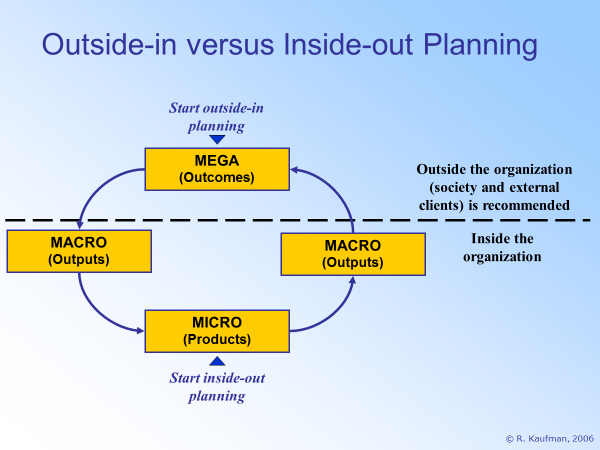ATD Blog
Success at and Beyond the Workplace: Expanding Your Talent
Fri Jan 17 2020

Talent development currently has a prime focus on performance improvement in the workplace. Working only within that box limits what we can contribute.
The Temptations
Every day, life tempts us. We are bombarded with self-help advice from TV, magazines, and friends, and we want to be healthy and feel good, so we go for one piece of advice or several. Sometimes they work but often they don’t.
The same is true for talent development and workplace improvement. We are tempted to fix trouble where it appears, and we are tempted by an array of promises, new tools, and processes.
The Disconnect
Effective talent development requires aligning that development with gaps in organizational performance and external impact. For example, what if you developed a sales training program that met all the learning objectives and received great ratings only to later find out that instead it was product safety concerns causing demand to dwindle to almost zero? Some training and development do add to the entire value chain, but most are left smoldering in the depths of operation because they’re not connected to all organizational needs.
Why We Do Not Have the Outcome We Desire
As with trying to be healthy, talent development usually starts from the here-and-now and assumes or hopes good things will happen by our work there.
For real and sustainable health, we are better off getting a full health condition assessment, just like what we get from a comprehensive health evaluation. Based on the vital signs, blood chemistry, and other tests, we have a total view of our health and well-being. From that total view, you can better select those interventions that will help become fit and healthy and live longer.
The Workplace and Beyond
The same holistic approach is important to deliver worthy performance improvement and performance accomplishment. Start from the outside-in—the total organization and its realities—rather than the usual and initially more comfortable (and conventional) inside-out approach by fixing in the workplace.
Why look at the total organization? Your company, to survive and thrive, must add measurable value to all stakeholders.
The Organizational Elements Model (see Figure 1) that is suggested in my HRD book Mega Thinking and Planning, offers three levels of results:
mega—external clients/societal contributions
macro—organizational contributions
micro—individual and small-group contributions.
If we start from the outside-in versus inside-out planning (see Figure 1), we will have more sustainable and worthy success. We don’t abandon the workplace; we align it with the whole organization and what the organization delivers.
Figure 1. Outside-in versus Inside-out Planning

Source: Kaufman, Change, Choice, and Consequences (2006), and Mega Thinking and Planning (2011)
Conventional approaches in our field start inside the organization at the micro level, identifying gaps in performance then designing, developing, and implementing ways and means to close those gaps. We collect data and validate our success in terms of how well we developed talent in the workplace. But how often do we check to see if we also added value at the macro and mega levels—to all our internal and external partners?
Alignment, the Big Picture, and Success
Lots of time and money are spent on workplace performance improvement. We should not stop doing that. At the same time, we should recognize that what is achieved in the workplace must add value for the entire chain—from resources to workplace activities to workplace contributions to organizational contributions to external client and societal contributions.
Figure 2. A value chain showing what an organization, uses, does, produces, delivers, and the external impact, value, and worth.

Using this hierarchy, we can apply our talents in the workplace and beyond. Without discounting workplace and talent development at the operational lever, we should also consider the alignments of the entire value chain. We should include the big picture (mega). All parts are equally important and must be considered because they operate in a dynamic environment.
What we should do is apply our talent development methods and skills to the the entire value chain. If we don’t, we are not able to prove the value of our professional contributions.
If we consider adding value to the total organization and all external clients, it is better to start planning and development outside the organization and roll down to identify gaps in performance (needs) as we suggest in our ATD book Needs Assessment. These gaps should be closed to add value at all levels of a planning: external clients (mega), what the organization delivers (macro), what we achieve in the workplace (micro), and the processes and resources that will deliver worthy results.
Applying Whole Organization Alignment for Worthy Results
Some things you can do to assure worthy results in the workplace and beyond:
Identify gaps in results—wherever performance doesn’t meet the standard.
Identify the cost to close the performance gap compared to the cost to ignore it, if it continues.
Determine if meeting the need will add value to the level above.
Determine if meeting the need will add value to the level above.
Determine if meeting the need will add value to external clients.
Close the gap.
Releasing Yourself and Expanding Your Contributions
It might be a bit unconventional to step outside the workplace box, but it will also cost less and be more successful in terms of delivering and proving worthy results. It will perform better than an inside-out approach. What we do as talent development professionals is add measurable value to our entire organization.
